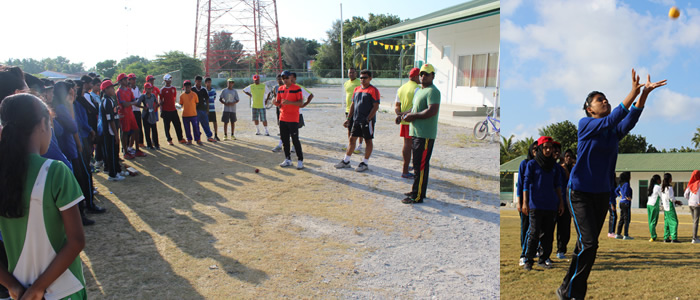Cricket, the world’s second most popular spectator sport, can provide a fun way for children of all ages to stay or get in shape. Cricket improves speed, agility, flexibility and reflexes; it increases concentration, the ability to think strategically and to utilise decision-making skills. Cricket also encourages sportsmanship and fair play – self control, integrity and respect for others is fundamental to the game of cricket. Many children who are reluctant to take part in team sports find themselves well suited for cricket.
Physical Benefits
Everyone who plays cricket can expect to experience physical benefits. For example, sprinting between the wickets provides an excellent aerobic workout. Cricket shares some basic foundations with some of the martial arts (or even dance and music for that matter!). Some examples of these: measure, tempo change, timing, velocity, and proper execution and simplification of technique. Therefore, children can associate the learning from one subject or skill set to another, linking the common ground to broaden their life perspective.
Mental Benefits
Cricket is an excellent mental exercise. Any cricketer who makes a serious effort to learn the game cannot help but develop greater powers of observation and a greater understanding of strategy. A cricketer, at the game’s top levels, must learn to develop a complete repertoire of shots or variations in bowling and learn how to judge and determine their opponent’s thoughts and character so as to anticipate their actions. The cricketer must learn to use this ability to entice or draw an opponent into making a mistake, by leading them into thinking that they are in control of the contest.
Social Benefits
Cricketers often become friends and competitors, finding themselves meeting hundreds of people over the years as they travel to competitions locally, nationally, and internationally. Very skilled players may have the opportunity to train overseas, compete in prestigious tournaments, which in the future may also include the Olympic Games.
What Will Cricket Do For Your Child?
Promote discipline, self-assurance, and responsibility
Develop coordination, strength, and decision-making skills
Provide positive interaction with peers and adults
Teach the ability to think tactically to overcome an obstacle
Cricket – The Perfect School Game:
It can be played indoors or outside, on a basketball court, asphalt or grass.
It allows the instructor to observe students both as individual participants and as parts of a team.
Cricket appeals to all children, not just those who are typically large, strong or fast. (In groups, this propensity causes many disaffected children to shrink away from active participation. This means less involvement and a discouraging, awkward experience for the child; it also makes the task of assigning that student a fair grade more difficult for the instructor.)
Cricket rewards patience, technique and intelligence; stature has very little to do with eventual greatness. This encourages all children to participate, and draws out those typically disaffected.
Suitability:
Cricket is suitable for boys and girls to participate in from an early age. Children from the age of 5 years old can begin to learn cricket by participating in the YDP program. Cricket is a non-contact sport and at this age is played with a soft cricket ball to ensure the safety of the children. Cricket is a great way for children to learn to work together in a team environment while developing important physical and mental skills.
Fun For All Ages, And In All Places
Boys and girls of all ages can play cricket both socially and competitively. While competitive cricket is mostly played on a pitch on an oval field, cricket just for fun can be played just about anywhere!



